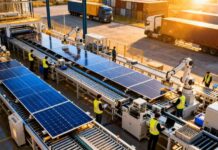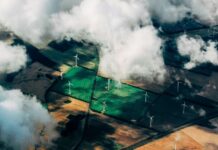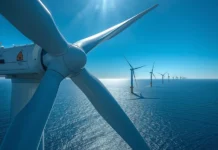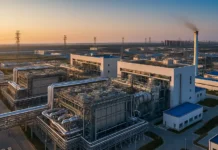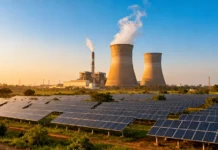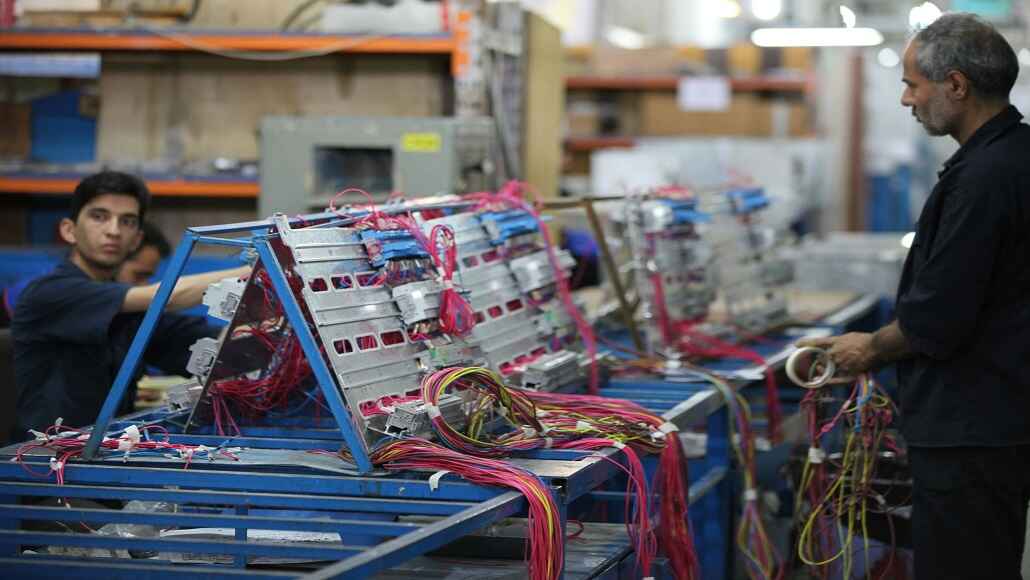The US electric construction equipment market happens to be experiencing very positive growth in spite of prominent challenges, with forecasts indicating a massive 28.06% CAGR all through 2030. As per a comprehensive strategy evaluation and forecast report, beginning from meagre 441 units in 2024, the market is anticipated to expand almost fivefold to around 1950 units by the end of this decade.
This kind of growth trajectory goes on to reflect the construction sector’s rising shift when it comes to sustainability, driven due to environmental concerns and growingly strict government regulations. But the path forward is intricate due to equipment costs, which are high; negligible tariffs when it comes to Chinese imports; and infrastructure barriers that happen to threaten to constrain the industry’s absolute potential.
Electrification charge being led by compact equipment
It is well to be noted that the shift to electric power takes place unevenly throughout equipment categories, with compact machinery leading the way. Electric excavators at present hold the largest market share and a price due to their versatility when it comes to urban construction as well as mining applications.
According to the notes in the report, the compact construction equipment segment happens to be experiencing the highest electrification rate because of its intricate structure as well as modest power demands. This kind of simplicity makes electrification a much more straightforward aspect as compared to larger and more intricate machinery.
The smaller equipment capacity in order to operate indoors within a basement or during the demolition project offers more incentives when it comes to electrification, as the fact remains that zero-emissions operations enhance worker health conditions in spaces that are confined.
In contrast to this, equipment having more intricate structures as well as specialized applications, especially the backhoe loaders as well as dump trucks, has seen prominently lower adoption rates. Contractors go on to remain hesitant in investing when it comes to electric versions of such machines because of their lower utilization rates as well as costs that are higher.
Prominent manufacturers, which are expanding electric offerings
There have been leading construction equipment manufacturers that are rapidly expanding their electric product base all throughout 2024.
Apparently, Case Construction Equipment went on to make some prominent moves along with two of its launches – the compact electric wheel loader 12EV, which features 23 KWH of cobalt-free lithium-ion battery and has a 1.15-ton payload load capacity, and the other one, a Case 580EV, which is an electric backhoe loader. In a similar way, Volvo construction equipment has expanded its lineup of North American electric vehicles with the novel mid-size electric wheel loader – L120 as well as the next-generation EC 230 electric excavator. The EC230 has already been rolled out across high profile sustainability projects such as Los Angeles Metro’s purple line extension.
On the other hand, Bobcat Which happens to maintain manufacturing facilities across Minnesota and North Dakota, has introduced a novel electric compact track loader at the 2024 Expo, which was held in Kentucky. The company has gone on to establish itself as a leading electric construction equipment manufacturer across the US market with an absolute range when it comes to compact machinery.
Meanwhile, Caterpillar, which emphasizes its bent to electrification, has gone on to showcase numerous electric machines at the 2024 Consumer Electronics Show held in Las Vegas. They showcased a zero-emission underground loader as well as a mini excavator there. The company has also inked a strategic agreement when it comes to electric trucks as well as charging solutions along with CRH – a leading brand when it comes to building material solutions.
Komatsu, which has gone on to pursue a domestic manufacturing strategy by way of collaborating with a US battery manufacturer called Proterra in order to develop electric construction equipment, has launched its lithium battery Power mini excavator in 2024.
Government initiatives that drive the market growth
The government policies that promote sustainability when it comes to construction are offering prominent momentum as far as theelectric equipment market is concerned. There are several major cities in the US, such as San Diego, New York, Los Angeles, and Austin, which have gone on to launch the North American Electric Construction Coalition in 2024, which looks forward to phasing out diesel-powered equipment completely.
The federal backing goes on to include the partisan infrastructure law, which has allocated $5 billion when it comes to national electric vehicle infrastructure and another $2.5 billion for the discretionary grant program when it comes to charging and fueling infrastructure.
The US Department of Energy has already announced plans to phase out fossil fuel usage within new building constructions and renovations. Beginning in 2025, the usage of fossil fuel at construction sites when it comes to new Federal buildings has to be reduced by 90% as compared to the 2003 levels, with complete eradication mandated for projects that begin in 2030.
It is worth noting that the government has also prioritized zero-energy building development, with a total of 22 programs at present in progress. Of these 22 programs, 14 happen to be residential and the remaining 8 commercial. All these initiatives, which are supported by $110 billion in government funding, are anticipated to finish more than 5000 family homes, almost 25,000 new apartments, and 222 new commercial buildings by the end of 2025.
The mining sector goes on to embrace electrification
The mining sector represents another very promising progress area when it comes to electric construction equipment. There are government regulations that are already in place that promote sustainable practices, which include the Mining Law of 1872 as well as the Surface Mining Control and Reclamation Act of 1977, which encourage the adoption of electric alternatives as far as surface and underground operations are concerned.
It is well to be noted that electric equipment happens to be primarily used in conveyor belts, drills, as well as pulley systems. But as per the report, there is a growing use of electrical excavators and loaders as well. This sort of a trend is anticipated to speed up as the mining companies look forward to prioritise emission reduction, and compliance along with environmental regulations.
Rising costs and challenges surrounding infrastructure
In spite of promising growth, there are certain significant obstacles that still remain. The high initial cost when it comes to electric construction equipment continues to be a very prominent challenge for its widespread adoption. As per estimates coming in from Volvo CE, an electric mini excavator would cost anywhere around $66,000 as compared to just $26,000 that can be spent on its diesel counterpart – a price difference of more than 150%.
Apparently, the recent trade policies have also pushed these economic challenges. In 2024, the government raised the tariff to 200% when it came to electric construction equipment that was imported from China and at the same time also imposed a 25% tariff on imported Chinese lithium batteries that are used in this equipment.
Also, a certain set of infrastructure challenges happens to present yet another significant barrier. The report goes on to highlight that numerous infrastructure development projects take place in the outer parts of the cities, where establishing a charging infrastructure can be really expensive because of the need for extensive electrical as well as network enhancement, high installation expenses, and also limited availability when it comes to electricity. These infrastructure gaps can also play as a deterrent when it comes to construction schedules and need greater redundancy in terms of electric equipment fleets in order to maintain productivity and, at the same time, make sure that the machines are charging.
Trends in battery technology
The market has seen very robust growth when it comes to the low battery capacity segment, which is below 50 kWh, especially because of cost efficiency as well as suitability when it comes to compact equipment. The report also goes on to segment the market by way of battery chemistry and evaluate the adoption of nickel manganese cobalt (NMC), lithium iron phosphate – LFP as and other technologies.
There are component suppliers in this such as Eaton, ABB, American Battery Solutions, and Ecovolta which happen to play a very critical role within the ecosystem by way of offering the battery systems as well as charging infrastructure, which is necessary so as to support the ever rising fleet of electric construction equipment.
What’s in store for the future?
In spite of the challenges, the remarkable projected CAGR, which is 28.06% all through 2030, goes on to suggest a very robust underlying demand as well as favorable long-term prospects as far as the US electric construction equipment market is concerned.
As manufacturers go to innovate, the scale of production increase and charging infrastructure also expands, with many current obstacles being diminished in significance.
The report also goes on to indicate that the convergence when it comes to government mandates, ongoing technological enhancement, and corporate sustainability commitments will surely sustain market momentum even as the sector works in order to overcome cost and infrastructure barriers. When it comes to construction firms preparing for a zero-emission future, the question is not whether to adopt electric equipment but when and how to manage the transition in a more effective way.
As there are major cities that are planning to absolutely phase out diesel-powered equipment when it comes to construction projects starting in 2025, the market indeed stands at an inflection point. Companies that successfully pass through the present challenges make a prominent competitive advantage since regulatory pressures intensify, and economics when it comes to electric equipment would continue to enhance all through the technological advancement as well as economies of scale.




